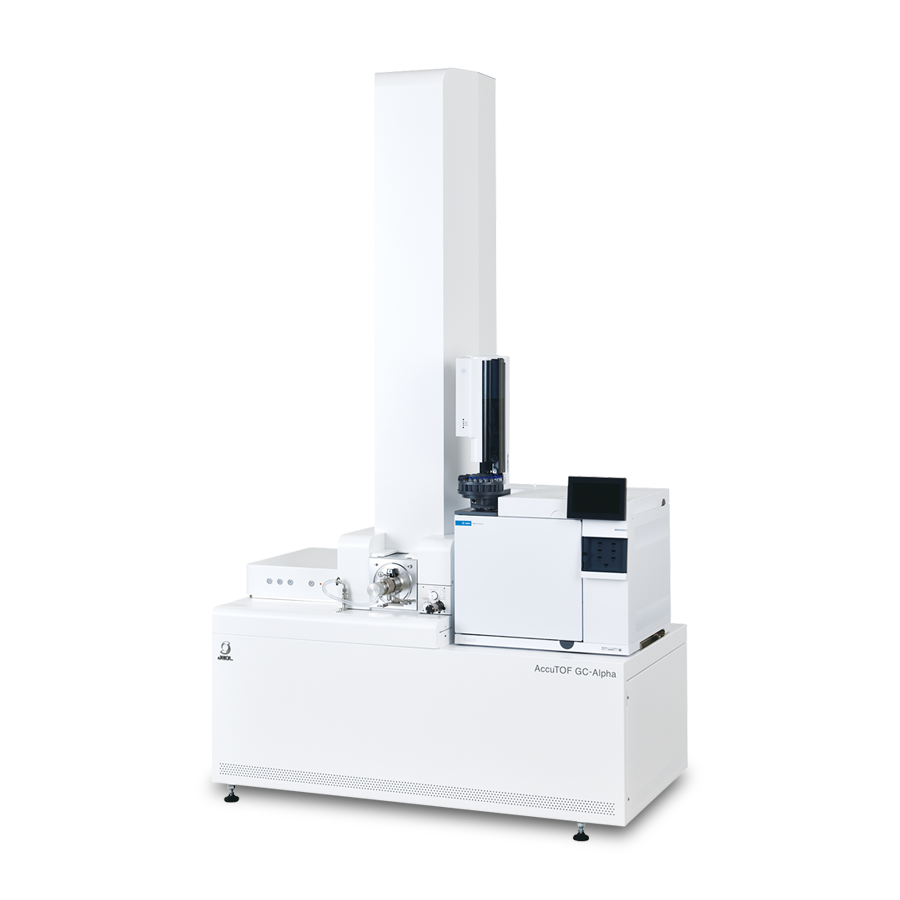Improving the Sensitivity of GC/FI Measurements with a New FI Emitter
MSTips No. 476
Introduction
For the field ionization (FI) method, a gas sample is ionized as its electrons move to the emitter (tunneling effect) in a high electric field. This is one of the soft ionization methods in which fragmentation is unlikely to occur. Even if molecular ions cannot be detected from a sample by the electron ionization (EI) method, the FI method can detect molecular ions and obtain molecular mass information, making it an effective ionization method for qualitative analysis. The detection sensitivity of the FI method largely depends on the wire configured in the emitter and the form of the whiskers created on the wire surface. We have developed a new emitter with the wire and conditions for creating whiskers optimized for the FI method in order to improve detection sensitivity. The effectiveness of this emitter is reported below by comparison with conventional emitters.
Experimental
The tip of the emitter consists of a wire and an extremely large number of needle-shaped whiskers created on it. On the conventional emitter, the wire is 10 µm in diameter and the whiskers are several tens of µm in length. This is designed to make it easy to sustain the sample applied to the emitter in consideration of its use in the field desorption (FD) method. On the other hand, for the FI method, the sample is adsorbed on the emitter and chromatogram peak tails appear. If the flash baking current is raised to prevent them, the detection sensitivity is degraded. The newly developed emitter is designed to inhibit the sample adsorption by making the wire thinner with the diameter reduced to 5 µm and shortening the whisker length compared to that of conventional models. The test sample was prepared from n-Hexadecane (Sigma Aldrich product, #55209) to 100 pg/µL using hexane. Measurement was performed by the FI method using each emitter with the mass spectrometer GC-TOFMS (JMS-T2000GC AccuTOF™ GC-Alpha, JEOL product) and a combination ion source for EI, FI, and FD. Details of the measurement conditions are shown in Table 1.

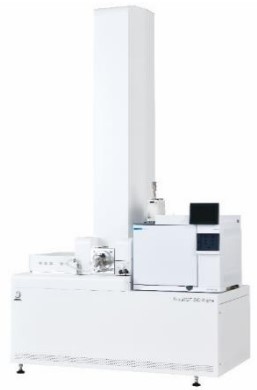
JMS-T2000GC AccuTOF™ GC-Alpha
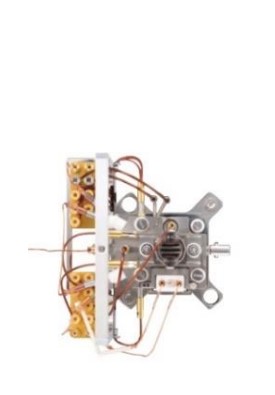
EI/FI/FD combination ion source
Table 1 Measurement condition

Emitter
Conventional Emitter: P/N 82144947 FD/FI EMITTER
New FI Emitter: P/N 782323928 FI EMITTER
Results and Discussion
The results of FI measurement of hexadecane (C16H34, MW 226) at 100 pg using the conventional emitter and the newly developed FI emitter are shown below. Figure 1 shows the extracted ion chromatograms (EIC) of hexadecane molecular ions (m/z 226). Both the conventional emitter and the new FI emitter show the good peak shapes. The sensitivity improved by approximately 10 times from S/N 48.6 on the conventional emitter to S/N 502.6 on the new FI emitter. Possible factors are as follows: the wire of the FI emitter is made thinner with the diameter reduced by half compared with the conventional model, which has raised the electric field at the tip of the whiskers and made it possible to ionize more components of the sample. In addition, the shortening of the whiskers has reduced adsorption of sample components on the emitter, and the flash baking conditions are such that the amount of electricity per unit time is reduced to 5% of that of conventional emitters (current: 10 mA from 40 mA, time: 6 ms from 30 ms).
Figure 2 shows the mass spectra of hexadecane. Molecular ions (M+) were clearly observed both on the conventional emitter and on the FI emitter. However, on the conventional emitter, the isotopic ion ([M+1]+) that should be observed at m/z 227 was not observed. On the other hand, the ion ([M+1]+) was clearly observed on the FI emitter. In qualitative analysis, the detection sensitivity of molecular ions is important, but at the same time, highly sensitive detection of isotope ions makes it possible to narrow down the molecular composition through isotope matching. This allows highly accurate qualitative analysis to be performed.
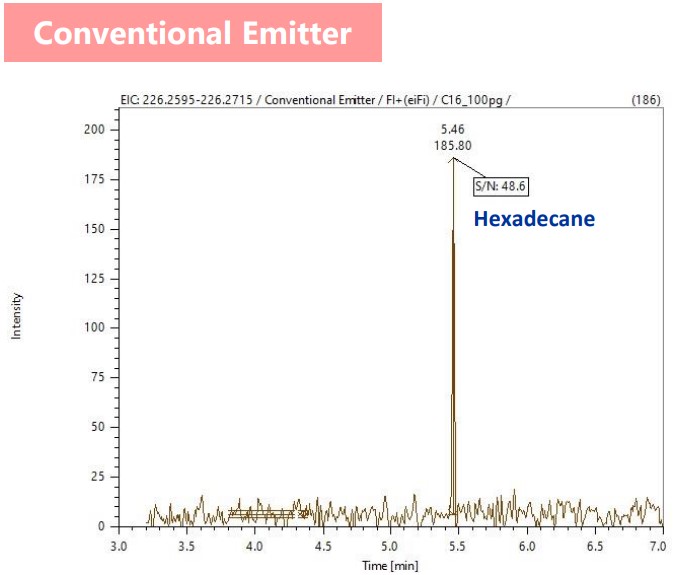

Figure 1 Extracted ion chromatograms of Hexadecane
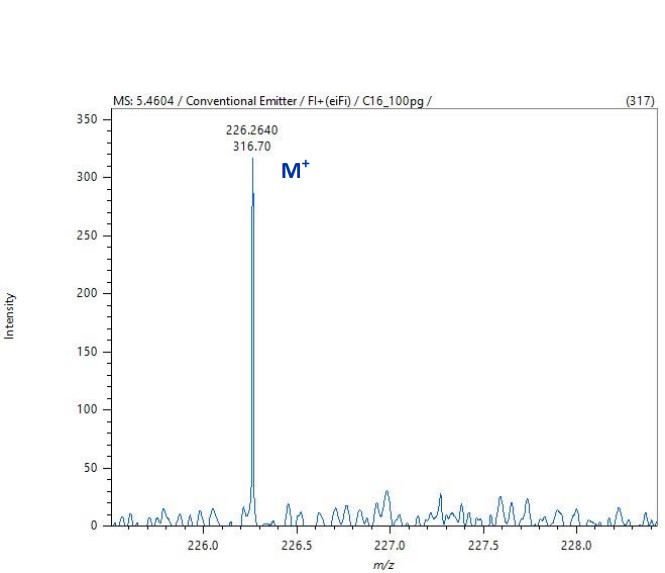
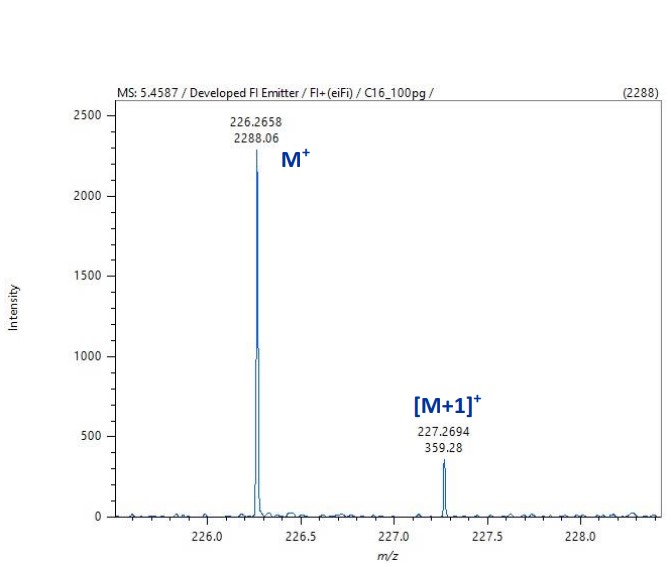
Figure 2 Mass spectra of Hexadecane
Conclusions
This document introduced the sensitivity improvement effect of the FI emitter optimized for the FI method. Use of this emitter by the FI method enables the molecular ion identification and highly accurate mass analysis of the sample that was difficult to analyze because the conventional emitter did not have sufficient sensitivity. This emitter is expected to be utilized for GC-MS qualitative analysis by the FI method in the future. It is also expected that the conventional emitter will continue to be used as being applicable mainly to the FD method as well as the FI method.
Solutions by field
Related products
Are you a medical professional or personnel engaged in medical care?
No
Please be reminded that these pages are not intended to provide the general public with information about the products.

